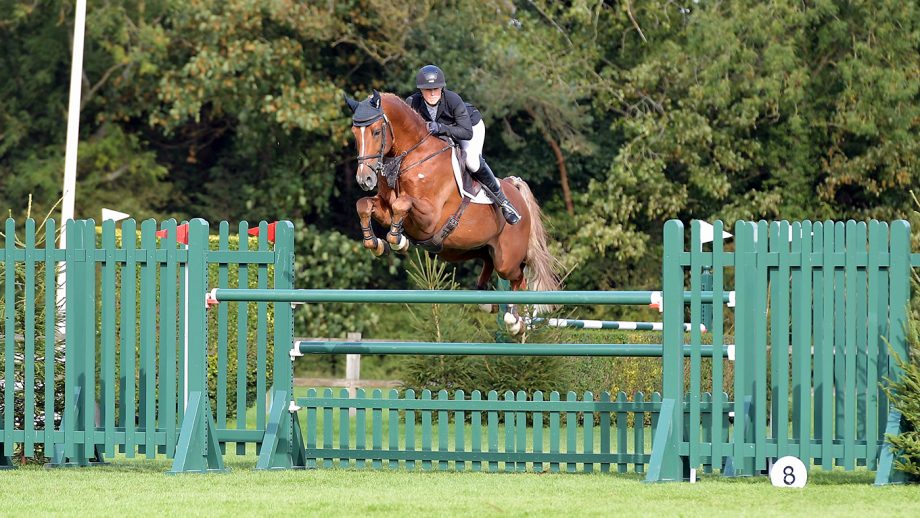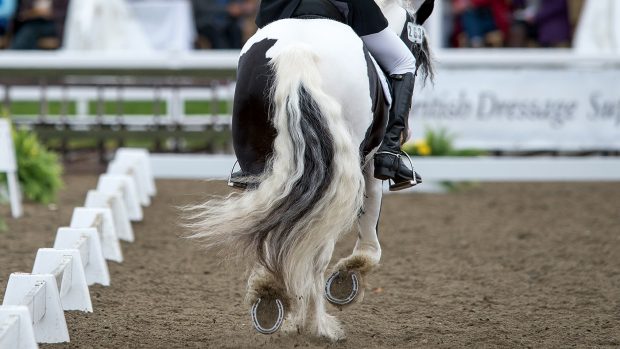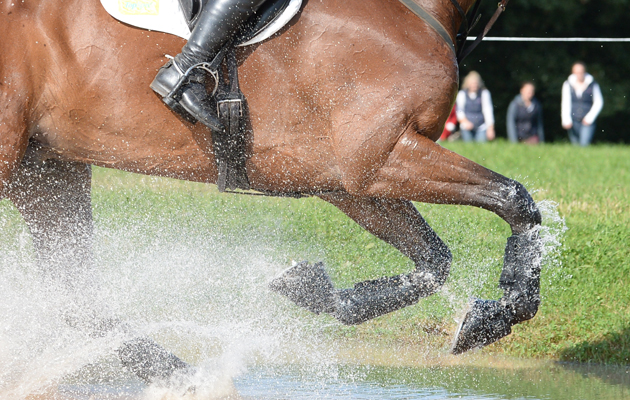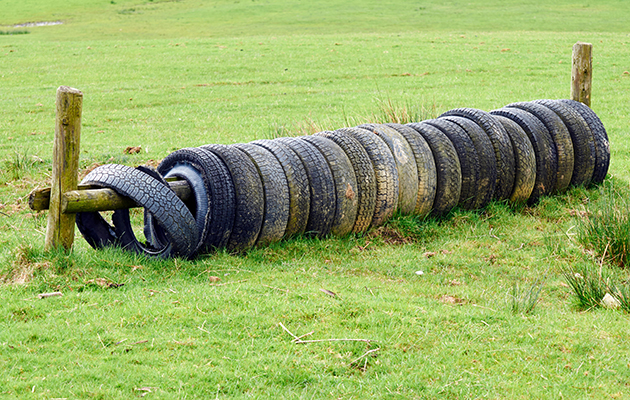Showjumper David Simpson shares an exercise to ensure your horse meets a fence on the perfect stride
About David
Showjumper David Simpson has represented Ireland in pony, junior, young rider and senior teams. He is based in West Sussex at DLS Showjumping, which he runs with his wife Louise. In 2016 David won both The Queen’s Cup and the Derby trial at Hickstead, as well as the Oliva Nova grand prix.
Training the stars
I took on the ride of Team 55’s Jenson and have used this exercise to help form a great partnership with him in a short space of time. I find it keeps his stride level and stops him rushing at his fences. It’s made a big difference and he is now being placed in 1.40m and ranking classes.
Tackling the problem

1. Build a vertical fence in the middle of your arena, then place a pole three-and-a-half steps away on each side, and a cavaletti fence 16 steps on from each of these. From either cavaletti to the first pole should be a normal four canter strides, so adjust the distance if you need to. I would start with the vertical in the centre at about 80cm but with very green horses just place a pole on the ground.
2. Ride over the first cavaletti and pole and halt your horse before the vertical, rein him back and give him a pat, then ride away and do the exercise again. Do this so your horse learns to respect your aids and doesn’t charge at what’s in front of him.
3. Once you get the feeling that the horse is waiting for you, carry on down the line and proceed over the vertical and the final cavaletti.
4. Similar to the four strides on your approach, your four strides to the final cavaletti are important, and you need to get the same feeling of control. If you need to, stop and rein back in this section also. After doing this, I let them walk for a moment to catch their breath and take in what you’re telling them.
5. Once you feel completely in control you can make the vertical bigger, or change it to an oxer. I wouldn’t go bigger than 1.30m, as they are working harder than you think.
Article continues below…
You might also be interested in:

#SundaySchool: the showjumping ‘gym’ with Holly Smith
The international showjumper talks us through this multi-fence workout which she uses with both her younger and more experienced horses

#SundaySchool: controlling the canter with Jessica Mendoza
The international showjumper uses a canter-on-a-circle exercise to help develop balance and control, which can be used in the ring

Subscribe to Horse & Hound this spring for great savings
Consider this…
- Always put your leg on over the pole before the fence, because this trains your horse to put effort into take-off without rushing.
- The most important thing when doing any exercise is to stay relaxed. Horses will make mistakes, so try not to get annoyed, just keep repeating it until they understand what you’re asking them.
- I build this exercise in the centre of the school so it can be done off both reins and in both directions. Horses are stronger on one side, so keep it equal and do it the same amount on both reins.
- Striding is one of the basic elements of showjumping and it is something that a lot of people struggle with. No two horses are the same, but I find this exercise can improve the issue in most situations, and it is very straightforward to do. I use it with all our horses, from the green four-year-olds up to grand prix.
For all the latest equestrian news and reports, don’t miss Horse & Hound magazine, out every Thursday.




